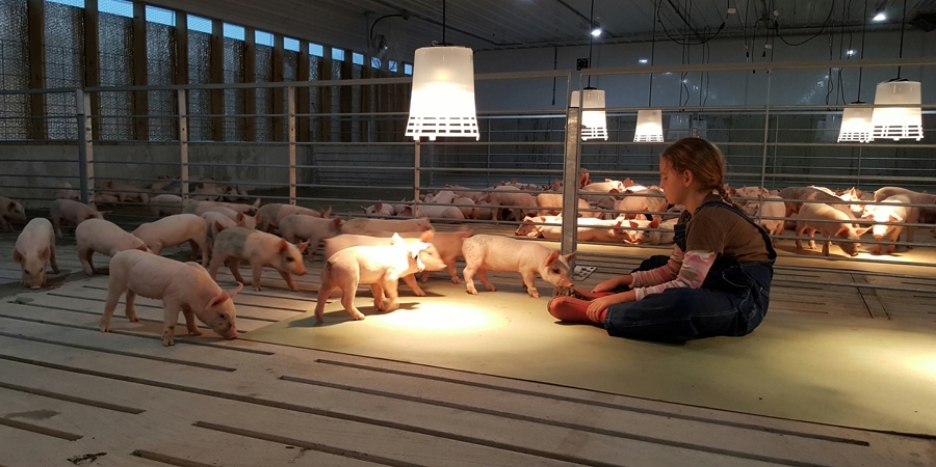Weaning young pigs in a building designed to meet the needs of market hogs requires creating small areas or "microclimates" that more closely imitate temperatures found in traditional nurseries.

Solid laying area
Provide a solid laying area of 0.3 to 0.34 square feet per pig to increase comfort and eliminate drafts. The most common of these temporary mats is a reinforced rubber mat with a raised feed lip around the perimeter. Because these mats are heavy, weighing over two pounds per square foot, producers may choose to use two mats per pen for easier handling or a lighter polyethylene mat weighing in at just over a half pound per square foot.
There is also a disposable mat available manufactured from cornstalks and wood fibers. This four by eight foot biodegradable mat weighs only ten pounds and eliminates the need for cleaning and disinfecting as it is simply composted after use.
Heating
Radiant heat is the perfect application for creating the microclimate needed for weaned pigs. By directing the heat at the pigs, we can increase the localized environment for the pigs without having to raise the temperature in the entire room. Forced air heaters regulate the room temperature to between 75 and 80 degrees Fahrenheit while the radiant heat maintains a microclimate of 90 degrees at pig level. Gradually reduce the radiant temperature over 28 days until it meets the target room temperature, at which time the brooders are removed and stored.
Types of radiant heat
Electric heat lamps are the least expensive type of radiant to install and regulate in a building. Installation amounts to placing several lamps with 250-watt bulbs over the laying area in each pen and adjusting the height until reaching the desired floor temperature. A simple thermostat with a remote sensor regulates the lamp output. Disadvantages include higher energy costs and bulb replacement.

Individual infrared gas brooders are the most popular form of radiant heat in wean-finish applications. Though higher in initial cost, these small 10,000 to 17,000 BTU brooders are powerful enough to heat a floor area suitable for 100 to 150 weaned pigs. A sensor mounted under one of the brooders transmits a signal to a control panel regulating the gas flow. Both on/off and modulating control panels are available depending on producer preference. Gas-fired brooders will typically have lower operating costs than electric systems.

Final Consideration - Air Inlets
Air from poorly managed inlets can cause pig-chilling drafts to occur in the weaning microclimate. Leaks around curtains, doors and fans can reduce airspeed, allowing cold incoming air to fall to the floor without proper mixing. Good barn management includes tightening up the building envelope so the incoming airspeeds reach 800 to 1,000 feet per minute and mix with warmer ceiling air before tumbling to the floor.












 Україна
Україна Méjico
Méjico



